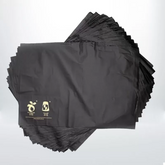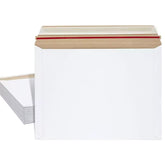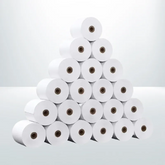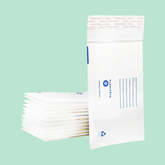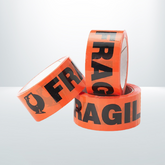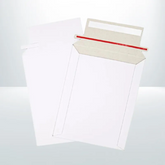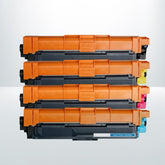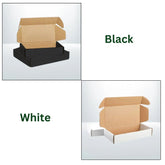Are you struggling to navigate the world of printer toner? Look no further!
In this article, we will demystify the process of choosing the right toner for your office. We’ll explore different types of toner, factors to consider when making your selection, and the importance of understanding toner yield and page coverage.
Plus, we’ll compare OEM and compatible toner options and provide tips for properly storing and handling toner.
Get ready to make informed toner decisions with confidence!
Types of Printer Toner
When choosing the right toner for your office, it’s important to understand the different types available.
There are primarily two types of toner: the original equipment manufacturer (OEM) toner and the compatible toner.
OEM toner is specifically designed and manufactured by the printer’s original manufacturer. It’s guaranteed to meet the highest quality standards and ensure optimal performance.
On the other hand, compatible toner is manufactured by third-party companies, but it’s designed to work seamlessly with your printer model. It’s often more cost-effective than OEM toner, making it a popular choice for many offices. However, it’s essential to ensure compatibility with your specific printer model before purchasing compatible toner.
Understanding the differences between OEM and compatible toner will help you make an informed decision and choose the right toner for your office needs.
Factors to Consider When Choosing Toner
To make an informed decision when choosing toner for your office, it’s important to consider several key factors.
First, you need to think about the compatibility of the toner with your printer model. Not all toners are created equal, and using the wrong toner can cause damage to your printer or result in poor print quality.
Next, consider the yield of the toner cartridge. This refers to the number of pages that can be printed before the cartridge needs to be replaced. It’s crucial to select a toner with a high yield to minimize interruptions and reduce costs.
Additionally, take into account the quality of the print output. Look for toners that produce sharp, clear, and vibrant prints.
Lastly, consider the price and availability of the toner. Opt for a toner that fits within your budget and is readily accessible for replacement.
Understanding Toner Yield and Page Coverage
Consider the toner yield and page coverage when selecting the right toner for your office.
Toner yield refers to the number of pages a toner cartridge can print before it needs to be replaced. It’s important to choose a toner with a high yield to minimize downtime and the need for frequent cartridge replacements.
Page coverage, on the other hand, refers to the amount of toner that’s applied to each page. Higher page coverage means more toner is used, resulting in higher printing costs.
It’s crucial to understand your office’s printing needs and the average page coverage to select a toner that’s both cost-effective and efficient.

Comparing OEM and Compatible Toner
To make an informed decision, compare OEM and compatible toner options for your office’s printing needs.
OEM, or Original Equipment Manufacturer, toner is produced by the printer’s manufacturer and is specifically designed to work with their machines. It’s known for its high quality and reliability, but it can be more expensive than compatible toner.
On the other hand, compatible toner is produced by third-party manufacturers and is designed to be compatible with multiple printer brands and models. It’s often more cost-effective, but the quality may vary.
When comparing OEM and compatible toner, consider factors such as print quality, page yield, and cost. Assess your office’s printing requirements and budget to determine which option is the most suitable for your needs.
Tips for Properly Storing and Handling Toner
When storing and handling toner, it’s important to prioritize proper storage techniques and careful handling to ensure optimal performance and longevity of your printer supplies.
To start, always store toner cartridges in a cool, dry place away from direct sunlight. Temperature extremes can affect the quality of the toner and lead to poor print results.
Additionally, make sure to keep toner cartridges in their original packaging until ready for use. This will provide an extra layer of protection against dust and moisture.
When handling toner cartridges, be gentle and avoid shaking them. Shaking can cause toner to spill out and create a mess.
Lastly, when installing a new toner cartridge, be sure to follow the manufacturer’s instructions carefully to ensure proper installation and avoid any potential damage to your printer.
Frequently Asked Questions
How Can I Check the Compatibility of a Specific Printer Model With a Particular Type of Toner?
To check if a specific printer model is compatible with a certain type of toner, consult the printer’s user manual or the manufacturer’s website.
They’ll provide information on compatible toner cartridges for each printer model.
Are There Any Environmental Considerations When Choosing a Printer Toner?
When choosing printer toner, consider environmental impact.
Look for eco-friendly options that are made from recycled materials and have low emissions.
This will help reduce your office’s carbon footprint.
Can Using Compatible Toner Cartridges Void My Printer’s Warranty?
Using compatible toner cartridges can potentially void your printer’s warranty. It’s important to check your printer’s warranty terms and conditions before using non-original toner to avoid any potential issues.
How Can I Determine the Estimated Cost per Page When Using a Certain Type of Toner?
To determine the estimated cost per page when using a certain type of toner, you can follow these steps:
- Divide the price of the toner cartridge by the estimated page yield.
- This will give you an idea of how much each page will cost.
Are There Any Special Precautions I Should Take When Handling Toner Cartridges to Avoid Any Health Risks?
When handling toner cartridges, remember to take special precautions to avoid any health risks.
Make sure to wear gloves, avoid breathing in the toner powder, and dispose of empty cartridges properly.
Conclusion
So there you have it, choosing the right printer toner for your office doesn’t have to be a daunting task.
By understanding the different types of toner, considering factors like cost and quality, and being aware of yield and page coverage, you can make an informed decision.
Whether you go for OEM or compatible toner, just make sure to store and handle it properly to ensure optimal performance.
Happy printing!







